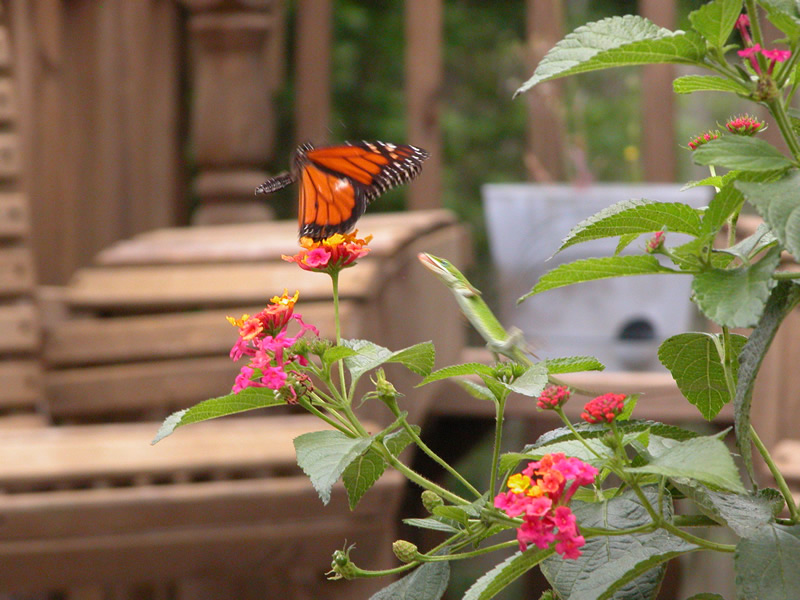| Monarch Butterfly Migration Update: May 13, 2005 | |
Today's Report Includes:
|
 |
| Monarch
Migration As of May 13, 2005 |
|
|
News
From the Migration Trail |
Latest Migration Data
|
The Monarch Migration Continues!
Other Journey North migrations have come to an end, but we'll continue to track the monarchs until they have expanded across their entire breeding range. Weekly updates with migration maps and data will be provided every Friday until the end of June.
We Need Your Help: Please Report Your Sightings
It's an important year to document the migration, so please don't go away. Even if monarchs have already been reported from your state or province, we want to know when YOU see YOUR first monarch.
- Remember: We can't track the migration without your help!
| How
Does This Year's Migration Compare? |
|||
 |
 |
 |
 |
| 2001 | 2002 | 2003 | 2004 |
| Adaptations
for Survival: How Did the Monarch Escape
from the Lizard?
Survival is a day by day, moment by moment effort, as this amazing picture and story show. One afternoon in April, Mary Ramsower of Spring, Texas saw a beautiful monarch in her backyard garden and wanted to take its picture. "I noticed a lizard and assumed it wouldn't go after the butterfly, being that they aren't palatable. Well, I snapped the photo and realized I had missed the monarch. He'd taken off just before the camera snapped. Then I wondered why. I put the picture on the computer and got my answer..." 
How did the monarch escape with his life, and avoid becoming lunch for the lizard? What adaptations must a monarch have to avoid predators like lizards, for example? First, take time to look closely:
Next, do some research:
*Adaptation: An "adaptation" is a physical or behavioral
feature an organism has that evolved in response to pressures for
survival. How a species looks, moves, obtains food, reproduces,
and responds to danger are examples of adaptations. |
|||
After your observations and research, list the monarch adaptations you discovered today on this chart. Next, take time to reflect upon all that you've learned about adult monarch butterflies this year. What adaptations--physical and behavioral--can you add to this chart?
Math Challenge for Older Students: How Quickly Did the Monarch Flee?
When flying to escape a predator, a monarch can flap its wings about 12 times per second. Here is a photo gallery of frames from a slow motion video. The 39 frames show 1/2 second of "powered" (flapping) flight. The butterfly is at rest in the first frame. Which frame best matches the position of the monarch that's escaping from the lizard? Estimate how many seconds after take-off that photo was taken.
| Powered
Flight in Slow Motion
Link to Photo Gallery |
||
 |
 |
 |
Year-End Evaluation: Please Share Your Thoughts!
Please take a few minutes to share your suggestions and comments in our Year-End Evaluation. The information readers provide is critical for planning new initiatives and for improving Journey North. We'd appreciate your help. THANK YOU!
|
|
Journey
North |
The Next Monarch Migration Update Will Be Posted on May 20, 2005
Copyright
2005 Journey North. All Rights Reserved.
Please send all questions, comments, and suggestions to our
feedback form
![]()
![]()
![]()
![]()
![]()
![]()








